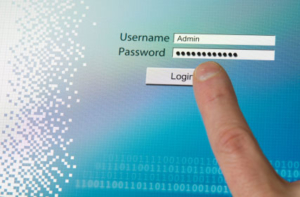How Your Username Can Be used to Track You
You probably have a few usernames, or you might have just one that you use for every site. Either way, your user names can be used not just to identify you online, but it can also be used to track you and find out information about you. How do people track you based on your user name? They do the following:
 They Start with a Google Search
They Start with a Google Search
The first thing people do to track your username is do a Google search. You will be amazed by all of the information that is out there. However, Google is not the only game in town, so the best scammers will search on other search engines, too, including Bing, USA.gov, various information broker sites and within social media.
They Then Move on to Social Networks
With so many people on social networks, it is a good possibility that a scammer can find you there, too, especially if they know the username that you use over and over again. It’s easy to find someone on sites like Facebook, Pinterest, Twitter, and Instagram, and in many cases, this is a gold mine of information for them. Once they find your account, they can do any number of things like save your profile image, and then do a reverse image source. This often helps them find even more information.
Don’t Forget the Blogs
Savvy searchers will also do searches of a username on blogging sites like Tumblr, Blogger, and LiveJournal. Unless your blog is locked down, and most are not, they can read them.
Do a General Sweep of Username Searches
There are other sites, too, that allow people to search by username. For example, you can search for a username on Spotify. This could tell them what types of music you like. They also might look on a site like Reddit, and they can see any comments you have made. They aren’t done yet, though…you can even search for usernames on sites like Amazon.com and eBay. As you can imagine, once they go through all of these steps, they can know a ton about you.
You might think that this is an invasion of privacy, but all of this information is totally legal, totally available, and totally free.
And many of you are TOTALLY putting it ALL out there!
If you put your information out there, it is there for anyone to look at and use as they will. So, consider changing up your usernames, and while you are at it, take a look at your accounts and content to make sure nothing there’s going to get you in trouble, and beef up the security options.
Robert Siciliano personal security and identity theft expert and speaker is the author of Identity Theft Privacy: Security Protection and Fraud Prevention: Your Guide to Protecting Yourself from Identity Theft and Computer Fraud. See him knock’em dead in this Security Awareness Training video.



























